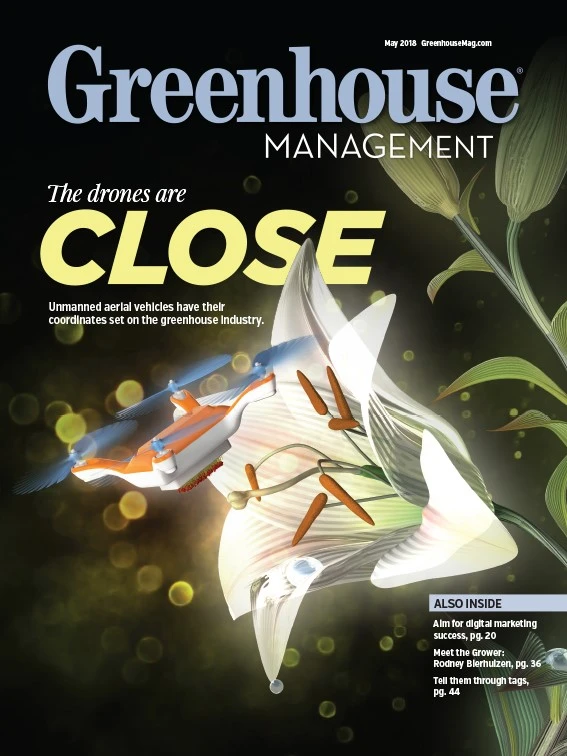
Between providing energy savings, spectral tuning and heat management, LED lights provide numerous perks to growers, says Lisa Jansen van Rensburg, marketing manager at P.L. Light Systems. Below, she explains what growers should know about switching to LEDs.
Greenhouse Management: What are the key advantages of using LED Lighting?
Lisa Jansen van Rensburg: There are several compelling reasons for growers to make the switch to LED technology, including:
- Energy savings - LEDs use up to 40 percent less energy than traditional HPS systems to deliver the same light levels.
- Spectral tuning - LED luminaires offer multiple color spectral variations — each specifically designed to elicit the desired plant response — including leaf size and stem elongation, chlorophyll concentration, pigment concentration, branching and early/late flowering. Plant response times are also often faster with LEDs. This spectral “tunability” is probably the most unique benefit from a horticultural perspective.
- Heat management - LED luminaires produce less heat and can be placed closer to plants — enabling higher light intensities, without excessive heat.
GM: Why isn’t everybody switching to LED lighting?
LJvR: Probably the most significant roadblock for widespread adoption of LED lighting is the high cost of ownership. An incremental cost of three to five times that of high-efficiency HPS technology means you have to look at many factors to determine if the ROI on converting to LED makes sense. A good way to get a true comparison between the cost of LED vs. traditional lighting is to look at the cost per µmol delivered, since outputs from one manufacturer to another can differ.
We are also still in the research phase in terms of spectral compositions and their effect on plant growth, fruit yield and quality. We are still discovering which crops respond well to LED lighting, and to specific spectral recipes.
GM: What is the ROI for an LED lighting system?
LJvR: Payback calculations for LED lighting are only useful when they apply specifically to your situation. Look for a manufacturer who will provide a custom light plan that considers all the factors specific to your application. Ensure you are considering all factors when calculating your cost of ownership.
Growers should consider not only the initial capital expenditure costs of the luminaires themselves, but also the incremental costs associated with a transition to LED lighting. Growers in northern climates, for example, will have to compensate for the loss of heat from the traditional light sources in the winter — so the additional heating costs could negate energy cost savings.
GM: What single tip would you offer growers when selecting a new lighting system?
LJvR: Growers should be aware that a company who manufactures only LED or only traditional-source lighting products will, for obvious reasons, try to “sell” growers on the technology upon which their products are based. Working with a manufacturer who offers multiple product technologies, will ensure an unbiased recommendation so the grower knows they are getting the product/technology that’s the best fit for their particular application. Also, look for a manufacturer who will provide a custom light plan that considers all the factors specific to your application.

Explore the May 2018 Issue
Check out more from this issue and find your next story to read.
Latest from Greenhouse Management
- Happy holidays from the GIE Media Horticulture Group!
- North Carolina Nursery & Landscape Association announces new executive vice president
- Plant Development Services, Inc. unveils plant varieties debuting in 2025
- Promo kit available to celebrate first National Wave Day on May 3
- Applications now open for American Floral Endowment graduate scholarships
- Endless Summer Hydrangeas celebrates 20 years with community plantings
- Invest in silver
- Garden Center magazine announces dates for 2025 Garden Center Conference & Expo





